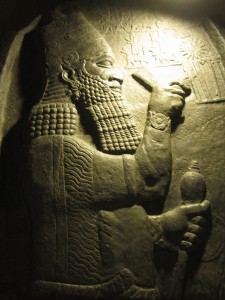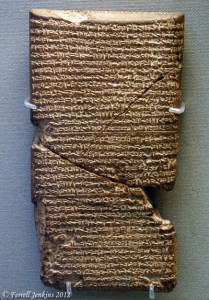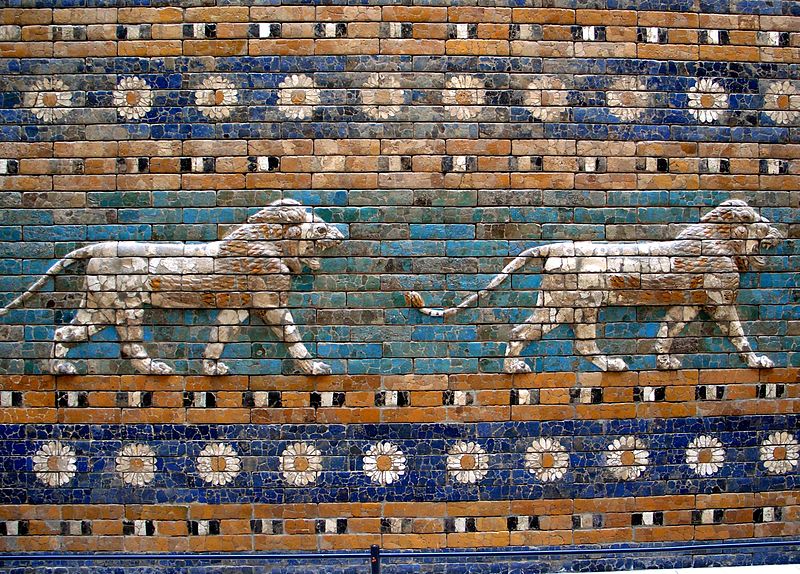This is now the 5th installment of “Where Archaeology Meets The Bible”. The previous installments can be found below in chronological order.
#1 Kassite Period [1600-1160 BCE].
#2 Middle Babylonian Period [1000 – 625 BCE].
#3 Middle Babylonian Period [1000 – 625 BCE].
#4 Middle Babylonian Period [1000 – 625 BCE].
Below I will be examining a number of texts from the Akkadian and Babylonian time of domination in the Ancient Near East (ANE). As I noted in previous posts, almost all of my data was pulled from Context Of Scripture, a 3 volume set containing archaeological data from the ANE. I would also like to note that many of these same findings can be found online at biblical archaeology sites like http://www.biblicalarchaeology.org/
http://ancientworldonline.blogspot.com
http://krc.orient.ox.ac.uk/ociana/index.php
As I did in the previous post, here is a timeline of the events being examined. We start today after the reign of Sennacherib around 680 BCE. After Sennacherib are Esarhaddon, Nabopolasser, and Nebuchadnezer. Nebuchadnezzar is on the timeline below at 586 BCE. Thus, we will only be covering a short period of about 100 years.
 Inscriptions of Esarhaddon show both peace and war
Inscriptions of Esarhaddon show both peace and war
Inscriptions of Esarhaddon describes a time with decreased war with Israel and increased war with Egypt. After the death of Sennacherib (681 BCE), a time of relative peace is seen in both the biblical texts of 2 Kings, and also in the Assyrian/Babylonian records. The inscriptions of Assyrian king Esarhaddon (681-669BC), the son Sennacherib, are rather non-militaristic and make no mention of animosity with Judah.
Esarhaddon even rebuilds Babylon after his father destroyed it. Concerning this time of restoration he thanks his god Marduk for the peace given to him with the land that they waged war against for 70 years.
Until the days were elapsed that the heart of the great lord Marduk should be appeased and he would find peace with the country against which he had raged, 70 years were to elapse, but he wrote [11] years (instead) and took pity and said: Amen! (COS 2.120, pg 306)
 This 70 year period of exile was foretold by the prophet Jeremiah, and confirmed by the Chronicler.
This 70 year period of exile was foretold by the prophet Jeremiah, and confirmed by the Chronicler.
After the 70 years were completed at Babylon, God told them He would cause them “to return to this place [Jerusalem]” (Jeremiah 29:10).
He carried into exile to Babylon the remnant, who escaped from the sword, and they became servants to him and his successors until the kingdom of Persia came to power.21 The land enjoyed its sabbath rests; all the time of its desolation it rested, until the seventy years were completed in fulfillment of the word of the Lord spoken by Jeremiah. (2 Chronicles 20-21)
Despite the temporary time of peace between Judah and Assyria, both nations still had some military activity. In the military records that do exist for Esarhaddon, he is seen battling with Egypt, and not being very successful. Likewise, Judah was having their own woes with Egypt. In 2 Kings 23:28-37, Pharaoh Neco goes up to Assyria, during the reign of Josiah (640-609BC), and Josiah goes up to meet him there. While in Megiddo, Neco kills Josiah and Jehoahaz takes the throne. However, without haste Egypt removes him after only three months and puts Jehoiakim on the throne, who ruled from 609-598BC.
Pharaoh Neco made Eliakim son of Josiah king in place of his father Josiah and changed Eliakim’s name to Jehoiakim. But he took Jehoahaz and carried him off to Egypt, and there he died. 35 Jehoiakim paid Pharaoh Neco the silver and gold he demanded. In order to do so, he taxed the land and exacted the silver and gold from the people of the land according to their assessments. (2 Kings 23:34-35)
 Reign of Nabopolasser and ascension of Babylon over Assyria
Reign of Nabopolasser and ascension of Babylon over Assyria
Right before Nabopolasser came to power by defeating Assyria with the Babylonian military campaign, Egypt had come north to wage battle with the Assyrians.
While Josiah was king, Pharaoh Necho king of Egypt went up to the Euphrates River to help the king of Assyria. King Josiah marched out to meet him in battle, but Necho faced him and killed him at Megiddo. (2 Kings 23:29)
After all this, when Josiah had set the temple in order, Necho king of Egypt went up to fight at Carchemish on the Euphrates, and Josiah marched out to meet him in battle. (2 Chronicles 35:20)
It was during this time of trouble with Egypt that Assyria was weakened to the point that the rebuilt Babylon could rebel against them and reclaim Akkad. The overthrow of Assyria marks a major turning point in Assyrian/Babylonian history, as well as Judean history.
In an inscription found from Nabopolasser, the leader of the revolt who became their king, he praises Marduk for his victory over the yoke that was the king of Assyria.
Nabopolassar reigned over Babylon from 626-605BC, during the reforms of Josiah. This was a time of rest for Judah since Assyria was now subdued. Then his son Nebuchadnezzar II succeeded him in 605BC. It was Nebuchadnezzar who finished the battle with Egypt and Assyia. He put the final nail in the Assyrian coffin. Reliefs from one battle at Carchemish depicts the battle that was waged.
It was also recorded in the Bible by the Chronicler.
After all this, when Josiah had set the temple in order, Necho king of Egypt went up to fight at Carchemish on the Euphrates, and Josiah marched out to meet him in battle. (2 Chronicles 35:20)




2 thoughts on “Where Archaeology Meets The Bible: Neo Babylonian Period [626 – 529 BCE]”